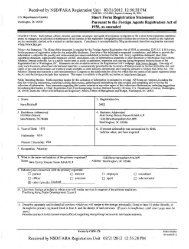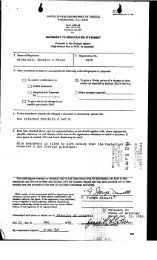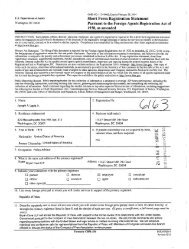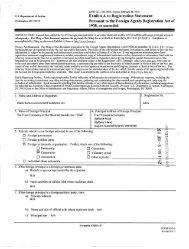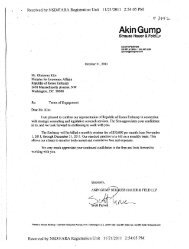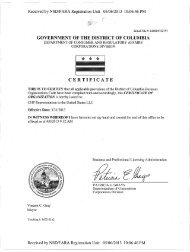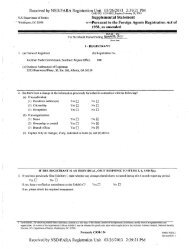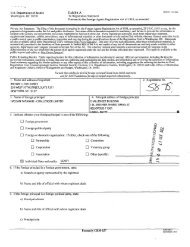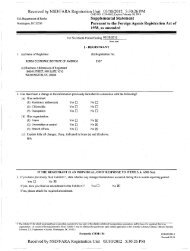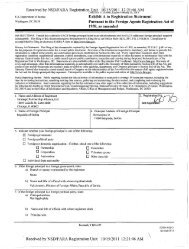Supplemental Statement - FARA
Supplemental Statement - FARA
Supplemental Statement - FARA
Create successful ePaper yourself
Turn your PDF publications into a flip-book with our unique Google optimized e-Paper software.
Received by NSD/<strong>FARA</strong> Registration Unit 05/01/2012 4:09:43 PM<br />
ta<br />
P^.reSSS^itJi<br />
& m<br />
_"*V___;*rC,<br />
& r^f-SS<br />
£*U-<br />
convietmtm ._<br />
WORLD,HEflTAGE USTEKffg. *.«_?• * .»•<br />
Tasmania's compelling convict heritage has been officially recognised<br />
by the United Nations Educational, Scientific and Cultural Organisation<br />
(UNESCO). In July 2010 it was announced that 11 Australian convict<br />
sites were inscribed on the UNESCO World Heritage List, five of which<br />
are Tasmanian.<br />
The Tasmanian sites are Port Arthur Historic Site and the Coal Mines Historic Site on the<br />
Tasman Peninsula; the Cascades Female Factory in South Hobart; Darlington Probation<br />
Station on Maria Island; and Woolmers and Brickendon Estates near Longford.<br />
"sns<br />
Brickendon-Woolmers Estates Tasmania (1820-50S)<br />
I_5_<br />
AUSTRALIA<br />
TASMANIA V<br />
Brickendon and Woolmers are two neighbouring estates located on the Macquarie River in northern<br />
Tasmania, where convicts were assigned to 'private masters' to undertake agricultural work. The estates,<br />
which were owned by the Archer brothers, operated as large farming properties with convict labour from<br />
the early 1820s until the 1850s.<br />
Darlington Probation Station Tasmania (1825-32; 1842-50)<br />
Darlington Probation Station, located within the Maria Island National Park off Tasmania's east coast,<br />
initially functioned as a convict station and later as a probation station for male convicts. The convict<br />
station operated at Darlington between 1825 and 1832 and was set up to relieve pressures on other<br />
penal settlements due to the increasing number of convicts. Following the closure ofthe earlier station,<br />
a probation station reoccupied the site from 1842. The location of Maria Island was ideal for a probation<br />
station, as it was located away from free settlements and was a difficult place from which to escape.<br />
Cascades Female Factory Tasmania (1828-56)<br />
The Cascades Female Factory was built in a cold valley at the base of Mount Wellington in Hobart, It was<br />
separated and hidden from the main colony, yet played a pivotal role in the penal transportation system.<br />
Approximately 25,000 female convicts were transported to Australia, comprising only 15 to 17 per cent of<br />
the convict population. However, convict women made an important contribution to the development ofthe<br />
colonies through their labour and theirvital role in family formation, ultimately leadingto greater social cohesion.<br />
discovertasmania.com Tasmania<br />
Received by NSD/<strong>FARA</strong> Registration Unit 05/01/2012 4:09:43 PM<br />
«w»,<br />
'_& v




